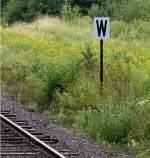BinaryMode
Active Member
I just have one question I'm sure most rail fans here know the answer to, so because of that I really don't want to join a rail fan forum just to ask this one question.
Question: Is there a standard to how many or how often a train horn is to be used while going through a railroad crossing? Reason I ask is that it seems with every train that goes through town they seem to lay on that sucker, and constantly too! I can be 2 miles away to the East and thus hear the train hit each crossing for about 2 miles or better North and South. Just a constant *HONK, HONK HOOOOONK HONK!!!" (my best train horn sound) I do realize that if something is on the tracks that would merit the need to constantly honk the horn. But this is all the time.
I'm not complaining or anything, and I'm certainty not "one of those people." Just wondering if there's a reason to the constant blasts like that? Off the top of my head this town has at least 5 crossings North and South spaced maybe .5 miles or so. Now I'm curios and will find out latter using acme mapper.
Question: Is there a standard to how many or how often a train horn is to be used while going through a railroad crossing? Reason I ask is that it seems with every train that goes through town they seem to lay on that sucker, and constantly too! I can be 2 miles away to the East and thus hear the train hit each crossing for about 2 miles or better North and South. Just a constant *HONK, HONK HOOOOONK HONK!!!" (my best train horn sound) I do realize that if something is on the tracks that would merit the need to constantly honk the horn. But this is all the time.
I'm not complaining or anything, and I'm certainty not "one of those people." Just wondering if there's a reason to the constant blasts like that? Off the top of my head this town has at least 5 crossings North and South spaced maybe .5 miles or so. Now I'm curios and will find out latter using acme mapper.




